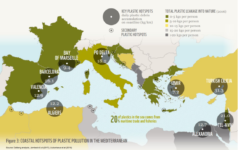Dalberg uses cookies and related technologies to improve the way the site functions. A cookie is a text file that is stored on your device. We use these text files for functionality such as to analyze our traffic or to personalize content. You can easily control how we use cookies on your device by adjusting the settings below, and you may also change those settings at any time by visiting our privacy policy page.
This blog draws on findings from a new report from Dalberg and WWF — Protecting Tigers from Asia’s Infrastructure Development Boom.
Tigers have travelled a rocky road over the past hundred years. Decimated from rampant poaching and merciless habitat destruction, the tiger population fell from over 100,000 at the start of the 20th century to just 3,200 in 2010. This rocky road is fast approaching a cliff edge.
Tiger landscapes contribute to economic growth in developing economies. Attracting millions of tourists each year, tiger landscapes provide local communities with sustainable sources of income and employment. In India, for example, three million people each year participate in wildlife tours, and this figure is growing each year. Tiger-related tourism today is mainly concentrated in the national parks, reserves and sanctuaries of India and Nepal, and is estimated at USD 2.2 billion per year. Given the difficulties of finding secure employment opportunities in tiger landscapes that are often remote, the jobs supported by tiger-related tourism are crucial for local communities.
Tiger landscapes also provide an abundance of environmental and socio-cultural value at local, national, and international levels. A recent report, for example, estimated the value of carbon absorption across six of India’s 50 tiger reserves is estimated to be over USD 17 million per year. Tiger landscapes also provide water for drinking and irrigation for downstream communities, and protect these communities from natural hazards, such as floods and landslides. In some areas, tigers are named national animals, while in others, the presence of tigers has led to their designation as World Heritage Sites. Additionally, tigers are inextricably linked to the millions of indigenous people that co-exist with them.
Signs of progress may be on the horizon. Following the 97% decline in wild tiger population over the 21st century, tiger range countries agreed during the 2010 Tiger Summit that a paradigm shift was needed in conservation action, and they set on an ambitious journey to double the number of tigers in the wild. The midway point of the resulting 2010-2022 Global Tigers Recovery Program marks the first time in a century that global tiger numbers are increasing. Thanks to the collective action of governments, communities and multilateral organizations, tiger numbers have recovered to around 3,890 in 2016.
It is vital that this delicate progress is sustained, but tigers now face a new and potentially far greater threat than ever before, which risks unravelling all the progress made to date: linear infrastructure. Linear infrastructure includes roads, railways, gas pipelines, power and transmission lines, and canals. As Asia’s population grows rapidly, so will the demand for linear infrastructure. By 2050, Asia’s urban population is projected to reach more than 3 billion people, and an estimated 11,000 kilometres of roads and railways are already planned for construction through tiger landscapes.
While improved transport and infrastructure is crucial to the economic development of tiger-range countries, the consequences for tigers are alarming. The fragmentation of tigers’ habitats through linear infrastructure developments has already led to increased human-tiger conflict, tiger mortality, and poaching. The unprecedented scale and speed of future developments threatens tigers’ existence, unless a new approach centred on long-term sustainability is taken.
There are already some ongoing good practices, which show that ecological systems can be integrated into development planning at a regional scale. However, to achieve the goal of doubling the wild tiger population by 2022, tiger range country policymakers need to make more long-term decisions that prioritise the maintenance of tiger landscapes. New approaches and political commitments from tiger range countries, along with proactive collaboration between infrastructure planners, implementers and conservation stakeholders, is essential to ensuring the future of tigers in the wild. This includes identifying areas crucial to tigers’ survival where no infrastructure development should be allowed, and preserving corridors that are critical to tiger movement. Habitat rehabilitation measures, anti-poaching guidelines and monitoring of wildlife movement must also be integrated into planning and design processes.
The responsibility to protect wild tigers does not rest solely with governments. Multilateral development banks and investors need to adopt best practice environmental safeguards and criteria for financing linear infrastructure projects in tiger landscapes, and refrain from financing projects that are incompatible with tiger, prey and habitat conservation.
To learn more about the impact of linear infrastructure on tigers, including three case studies that span across multiple tiger range countries, read our full report.









